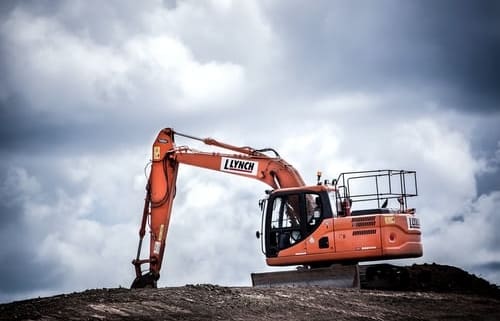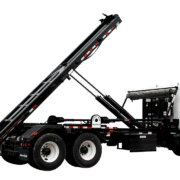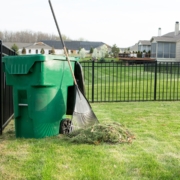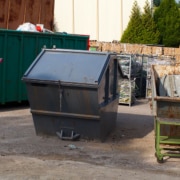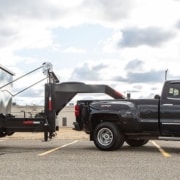Best Tips for Construction Debris Disposal
Construction waste poses a great danger to the environment. For this reason, most construction industries need to find suitable methods to manage construction and demolition materials that generate waste during construction activities. But choosing a commercial dumpster cost Los Angeles County helps you get waste out of the site, and it is one good way of safe waste disposal.
Both Construction and demolition materials consist of the debris generated during construction, renovation, and demolition of buildings, roads, and bridges. Heavy and bulky materials are the following examples of construction and demolition materials.
1: Concrete.
2: Wood.
3: Asphalt.
4: Metals.
5: Bricks.
6: Glass and
7: Rocks.
Benefits of Reducing Disposal Materials:
1: Employment creation and an increase in economic activities in recycling industries. It will also help increase business opportunities within the local community in areas where deconstruction and selective demolition are used.
2: Reduced overall building project expenses through avoided purchases of costs and donated recovered materials to qualified charities, which offers a tax benefit. Its cost also comes down to onsite material use.
3: Fewer disposal facilities are associated with environmental issues.
4: Conserve landfill space.
5: The environmental impact associated with the extraction and consumption of resources and the production of new materials is offset.
Reduce, Divert and reuse and recycle C and D Materials
You can help diverge construction and demolition materials from disposal by practicing source reduction, recycling, and reusing existing materials. You can also buy used and recycled products and materials.
1: Reduce
With source reduction, one can reduce the life-cycle of material use, energy use, and waste generation. One of the highest priorities should be given to address solid waste issues. Source reduction helps in preventing waste from being generated in the first place.
Some examples of it include-preserving existing buildings rather than constructing new ones, optimizing the size of new buildings, designing new buildings for adaptability to prolong their life. The use of construction methods allows and facilitates the reuse of materials and employs alternative farming techniques.
Reducing construction and demolition also conserves landfill space and reduces the environmental impact of producing new materials. Also, it can cut down the overall building project expenses through avoided purchases.
2: Divert and Reuse
Raw construction and debris demolition can be diverted and used as a resource. Also, some materials can be diverted, and it includes:
1: Landscape and Land clearing debris.
2: Asphalt Pavements.
3: Gravel and aggregate products.
4: Concrete.
5: Masonry scrap and rubble.
6: Clean Wood.
7: Plastics and
8: Insulation materials.
Recovering but using valuable construction and demolition materials for further use is an effective way to save money and conserve natural resources. Deconstruction can be used at several levels to usable materials and significantly cut waste. It contains the following benefits and includes:
1: It maximizes the recovery of materials.
2: One can conserve finite forest resources.
3: Provide employment opportunities.
4: Allows communities to create local economic activities around manufacturing or reprocessing salvaged materials.
5: Diverts demolition debris bound for disposal.
3: Recycle
Most of the building components and construction debris can easily get recycled. Both the concrete and rubble are often recycled into aggregate and concrete products. Also, wood can be easily recycled into wood products like furniture. Metals like steel, copper, and brass are valuable resources to recycle.
Usually, there are three basic methods for doing waste recycling:
1: Site-Separated
This part uses multiple boxes for each type of waste, and separating construction waste on the job site gives you immediate feedback and helps in ensuring that the project recycling goals are all met. On the other end, site separation also helps in promoting a responsible atmosphere on the job site and is the best method for diversion goals. However, it sometimes takes up more space and requires a high level of supervision.
2: Commingled Recycling
This type of recycling uses only one container and sorts everything off-site. Thus, it makes it easier for the staff to manage waste on-site. Also, commingled recycling requires a little storage and is the best option for sites that are tight on space.
3: Hybrid Recycling
This type of recycling combines site-separation like a box of non-recyclable waste. Mixed recycling represents the best of both worlds, and it optimizes the weight vs. sorting effect. The total number of boxes can be reduced in phases. It also reduces work for sorting haulers and reduces hauling fees.
4: Construction waste removal can be better
However, dealing with construction debris and construction waste removal is one of the most daunting challenges the construction industry faces. Disposal costs are rising, and productive resources are being taken up relentlessly to deal with the ongoing need to clean and dispose of construction waste.
As landfill space is diminishing quickly, alternatives such as the reuse and recycling of waste materials are a pressing concern. The good news is here that the C & D waste challenge provides you an opportunity for contractors and builders to contribute positively to the environment.
One can get rid of construction waste, and either for disposal or for recycling, it is still a chore for most contractors. Also, it can be a better chore when outsourced. Moreover, it can be your best option for better construction waste removal. When deciding to hire a professional firm to deal with your ever-present construction waste and debris, consider the real advantages.
In order to get better construction removal, here are some of the few tips for it:
1: Take advantage of the convenience factor.
2: Take account of your health.
3: Take advantage of Measurable cost savings.
4: Benefit from the reliability and efficiency of a professional firm.
Final Thoughts
So, whether you are building a new home or renovating the current one, you no longer have to worry about construction debris removal. One can have lots of options at your disposal, and it is up to you to select the one that meets your needs. Construction debris recycling is the best option, which you can either do at the construction site or let the professionals take the stress off your shoulders.
You need to trust the commercial dumpster rental prices Orange County recycling needs. The best part is that you won’t have to worry about the construction waste materials pickup and disposal once the project is done. Take your time and remove the debris from either your home or construction site.

